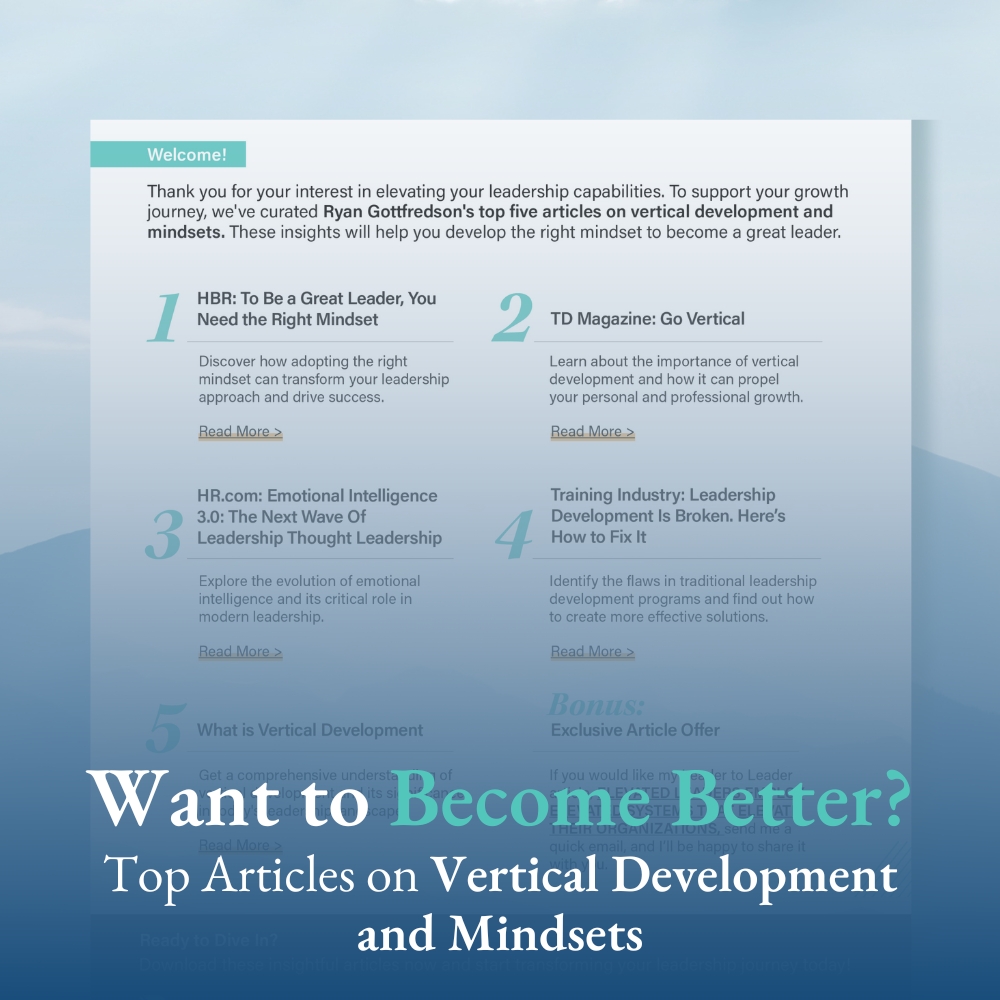In order for a leadership development program to be effective and successful, what does it need to include?
- A purpose – The purpose will dictate almost all elements of the programming. There is not one specific purpose that a leadership development program needs. But, the purpose should be broad enough to allow for a focus on both horizontal development and vertical development.
- Goals – It is ok to identify a number of goals for the program. These goals can be horizontal development-related (e.g., improving communication skills), vertical development-related (e.g., develop a growth mindset), or outcome-related (e.g., greater emotional intelligence, higher engagement in their team over the next year, possessing higher levels of personal complexity).
- A focus on whole-person growth – It is crucial that those planning a leadership development program recognize that the effectiveness of a leader is contingent upon the quality of their being more than the quality of their doings. Thus, the leadership development program needs to emphasize the development of one’s being. This means that topics such as self-awareness, mental health, physical health, resilience, stress management, time management, etc. need to be covered.
- Acknowledgement of psychological or neurological barriers to growth – Some people don’t want to grow (e.g., they believe that they are already “good enough”), don’t believe they can grow (e.g., they have a fixed mindset), or don’t currently have the wiring to grow (e.g., they have had enough trauma in their past that their brain is wired so strongly for self-protection that they are unable to develop cognitive and emotional resources to growth). Thus, engaging in efforts on the front end of a program to determine one’s growth-readiness can be vital, as it would provide opportunities to elevate participants growth-readiness.
- An observation: In working with thousands of leaders, I have learned that leaders vary in their metacognitive abilities. And, the more a leader struggles with metacognition, the less they develop in the program. Thus, I believe organizations will get more out of their leadership programming investment if they prime the leaders for the leadership development programming by helping leaders learn about how people learn and grow and/or engage in metacognition activities.
- Space for personal development efforts – Too often, I find that organizations create a leadership development program that allows the leaders to carve out the time to attend the leadership development programming. But, being away from the day-to-day work, when the leaders leave the programming (e.g., workshop), they often feel like they have fallen behind and have to catch up. If they feel this way, it is going to be difficult to get the leaders to engage in the development efforts that need to occur outside of the development programming.
- For example, I commonly ask leaders to spend 5-10 minutes per day exercising their positive mindset neural connections. Most leaders do not do this, and their number one reason for not doing is: “I don’t feel like I have the time.”
Part of the “space for personal development efforts” needs to include space for engaging in self-reflection. Self-reflection could focus on the feedback they have received, their purpose, their identity, etc.
- Feedback – The leaders need to receive feedback on their leadership during the program. This could be general feedback or feedback related to a specific focus of the program. I believe feedback from the more sources, the better.
- Accountability – There needs to be a process for tracking the degree to which leaders are engaging in the work of development.
- Measurement of Impact – Regardless of the length of the leadership program, there should involve some sort of a baseline measure at the beginning of the program, and some sort of a closing measure at the end of the program. These measures can be qualitative or quantitative. They can come from the leader or they can come from the leaders’ peers or subordinates. The measure of impact should be aligned with the purpose and goals of the program.
What am I missing? Put it in the comment box below.
Want help elevating your leadership development programming?
I would love to help. Across my experience, I commonly find that most leadership development programming does not:
- Focus on the leader’s whole being
- Focus on vertical development
- Engage in efforts to assess or acknowledge growth-readiness
And, these are the areas where I can help the most. So, if you want more of these things in your current or upcoming leadership development programming, let’s jump on a call. You can schedule here.










